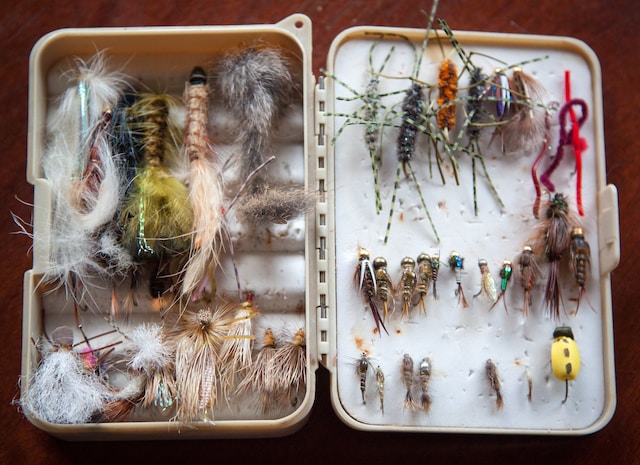Whether fishing for trout or salmon, using the right tackle and bait can mean the difference between a great day on the water and a bad one, the right tackle will help you catch more fish and land your catches more easily.
Bait options like worms, insects, minnows, and shrimp closely mimic the natural prey of targeted fish species, making them irresistible to anglers. However, they can also be messy and require refrigeration or a water-circulating live well to keep fresh.
Choosing the Right Tackle
Contents
It’s important to keep your tackle box well organized. It can save you valuable time on the water and keep your tackle in good condition throughout the season. It’s important to periodically empty and thoroughly clean your tackle bags and boxes. It removes accumulated saltwater, which can corrode reel bearings and rust lures.
It is also important to have a variety of baits on hand. Different fish species have specific feeding habits and preferences, so it’s important to know what types of bait will attract them most effectively.
Finally, using the proper fishing line for your target species is important. Some fish require a heavier line than others, so it’s important to research before heading out on the water.
Choosing the Right Bait
The bait you use depends on your target species and fishing conditions. Fish prefer live baits resembling their natural prey, such as worms, insects, and minnows. The old saying “matching the hatch” is so important.
You can also choose from various artificial lures molded to resemble worms, insects, and minnows. These types of baits often work well in various situations. They can be beneficial when fishing in clear water or on windy days when fish may become lethargic due to increased barometric pressure.
Many tackle box stores have employees who are avid fishermen, so feel free to ask them about their favorite baits for a particular lake or pond. Also, if looking for a fishing place where tackle and bait is provided Barnstable MA would be best. However, it’s important to remember that different regions have different bait restrictions, so you should always know local laws before choosing your bait.
Keeping Your Bait Fresh
Even in a large bait tank, the bait will die alarmingly in the summer heat. Three main factors kill bait prematurely: ammonia, oxygen, and temperature.
Ammonia builds up in the water from defecation and urination, eventually poisoning the bait. Oxygen is used up by the bait as it breathes, which can be a problem when it’s in a small bait bucket or cooler. Keeping the water cooler will keep oxygen levels high, keeping your bait alive and wriggling around, increasing its attractiveness to fish.
Most baits, especially those with firm flesh, can be frozen quickly, such as garfish or pilchards. Frozen yabbies can become mushy, while pilchards are soft and difficult to handle on the hook. Curing them helps them remain tough, but it’s less effective than fresh bait.
Keeping Your Line Clean
When fishing on a river, your line can be subject to many things that will make it dirty and sticky. Keeping your lines clean is important even if you often fish in a different spot. It is easy for your line to pick up residue and grit from the water. It can cause your line to sink. A dirty line can also tangle easily. It can be frustrating and result in missed strikes.
Using a brush or chamois cloth to remove visible grit from your reel is a good idea. It will help prevent it from becoming clogged up and allow you to retrieve your line more easily. When choosing bait, it is often best to choose a realistic option, as this will more closely resemble the food the target fish will eat. Some popular natural bait options include worms, crickets, and fiddler crabs.





